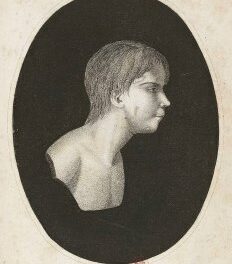We support our Publishers and Content Creators. You can view this story on their website by CLICKING HERE.
The novel “Salem’s Lot” proves that Stephen King is both a first-rate storyteller and a top-notch writer, who is especially good when describing the imagination of a child and the child’s ability to see things the adult no longer can. But is it a great work of horror?
On November 17, 1979, two months after I had turned twelve, I stupidly sneaked out of my bedroom and quietly crept down the stairs. From that vantage point, I watched a bit of Stephen King’s Salem’s Lot, a CBS made-for-TV-movie that was the talk of seemingly everyone leading up to that night. Understandably and quite properly, my mom had forbidden me to watch it. Filled with certainty that I was way too old to be scared, I watched it, though covertly.
And though I did not get caught by my mother that night, I certainly received my punishment. For years—far into adulthood—the images that I saw that night on the TV have haunted my imagination… and not haunted in the good way. In particular, I can see in my mind’s eye two vampiric figures arising in a basement, their eyes glowing and their would-be victim completely unaware of the danger. The face of each figure was rather featureless, making them even more terrifying in their lack of distinctive will and personality.
A few years later, around the age of fourteen, I started reading the actual fiction of Stephen King, and I rather fell in love with it. I avoided Salem’s Lot, however, as it had simply terrified me too much as a kid.
Finally, about five years ago, I decided the best way to exorcise these lingering memories was to read the book. I did. And I was more than impressed. Prior to reading Salem’s Lot, I would happily have labeled Mr. King as a first-rate storyteller but not a top-notch writer. The man can produce incredibly complicated plots, and many of his characters are so well-sketched out as to seem real to me. Mr. King is especially good when describing the imagination of a child and the child’s ability to see things the adult no longer can. Additionally, Mr. King can write about the righteousness of a child better than any other contemporary writer.
My disappointment with Mr. King, however, comes in his lingering over evil. For example, rather than explaining that someone was murdered, it generally takes him four or five pages to drag the reader through the actual letting of blood and the spilling of guts. Too much at times.
Though equally as dark in tone in his own fiction, for example, Russell Kirk would explain that a murder had occurred, but he left the vast possibilities of that murder—in its details and specifics—to the imagination of the reader. In a sense, Kirk’s approach allows one to experience an even more terrifying scene, as the murder becomes intimately real to the reader than as a mere almost-journalistic and factual blow-by-blow of myriad details.
My view of Mr. King’s writing, however, changed dramatically the first time I finally read Salem’s Lot. The writing style was, to my surprise, not just good, but excellent. In part, he artistically avoided the foul language and gore so readily employed in his later fiction. In so doing, he made the novel not only better as art, but scarier as a story.
I’ve now reread Salem’s Lot. It seemed like the right thing to read this autumnal season, especially as I have just returned from a conference in Maine. Salem’s Lot is set, fictionally, just about twenty miles north of Portland—God’s Country, to be sure. And, yet, if King is correct, it is the devil’s country, too.
Salem’s Lot is, rather blatantly, a re-write of Bram Stoker’s Dracula, but set in a relatively modern (1975) setting. A young, widowed writer returns to his boyhood home in Jerusalem’s Lot, Maine. Haunted by childhood memories of having explored the tortured Marsden mansion that overlooks the town, Ben Mears seeks to exorcise his own demons by immersing himself in the lore of the town and the home. Very quickly, he realizes that an evil pervades all, especially after a dog is brutally murdered and several children disappear. Together with his plucky girlfriend, the high school English teacher, a brilliant pre-teen boy (Mark), a local physician, and the parish priest, Mears combats the evil that has recently arrived from Europe and planted itself in the town.
In the last ten years or so, vampires have become so pervasive in Hollywood culture as to become ineffectual as scary creatures. Vampires as traditionally understood, though, should be horrifying images of what the human person is not. Not alive and not dead, they walk the earth as parasites, controlled only by their insatiable yearnings for human life and blood and by those who tempted them or consumed them into a non-life. They cannot exist in sunlight, and they can do nothing unless so invited. In other words, they embody the perfect anti-man. Not surprisingly, in nineteenth-century Protestant literature, authors often presented Catholics priests as vampiric, preying on the unsuspecting women of their parishes. Frankly, this is a compliment to the Church, as it reveals just how fearful a bad priest can be as opposed to the true goodness of a holy one.
Though certainly not Catholic, Stephen King realizes the only solution to fighting the vampires in his novel comes from the Catholic Church.
As mentioned above, though, it is, frankly, the writing style that Mr. King employs in this novel that appeals to the discerning reader. Below is a sample of not only the excellent writing style, but the invocation of childhood heroism that so distinguishes Mr. King from other current novelists.
Before drifting away entirely, he found himself reflecting—not for the first time—on the peculiarity of adults. They took laxatives, liquor, or sleeping pills to drive away their terrors so that sleep would come, and their terrors were so tame and domestic: the job, the money, what the teacher will think if I can’t get Jennie nicer clothes, does my wife still love me, who are my friends. They were pallid compare to the fears every child lies cheek and jowl with in his dark bed, with no one to confess to in hope of perfect understanding but another child. There is no group therapy or psychiatry or community social services for the child who must cope with the thing under the bed or in the cellar every night, the thing which leers and capers and threatens just beyond the point where vision will reach. The same lonely battle must be fought night after night and the only cure is the eventual ossification of the imaginary faculties, and this is called adulthood…. Tonight Mark Petrie had faced one [a real terror; a vampire], and ten minutes later lay in the lap of sleep, the plastic cross still grasped loosely in his right hand like a child’s rattle. Such is the difference between men and boys [King, Salem’s Lot, 372-373]
The Imaginative Conservative has published several essays on the natural conservatism of horror fiction and movies. If one can effectively separate what is slasher from what is horror, then horror becomes not merely a good genre, but a brilliant one. It allows us to confront the horrors of this world in symbolic terms, thus giving us distance and, paradoxically, objectivity. Just as Halloween mocks the Enemy, so, too, does horror, when probably exercised.
This essay was first published here in January 2016.
The Imaginative Conservative applies the principle of appreciation to the discussion of culture and politics—we approach dialogue with magnanimity rather than with mere civility. Will you help us remain a refreshing oasis in the increasingly contentious arena of modern discourse? Please consider donating now.

 Conservative
Conservative  Search
Search Trending
Trending Current News
Current News 






